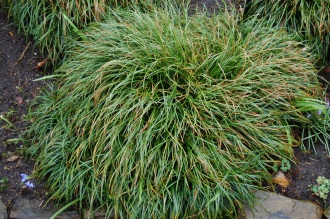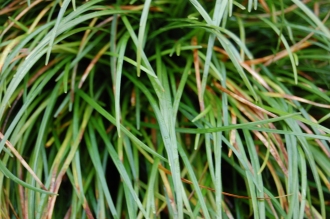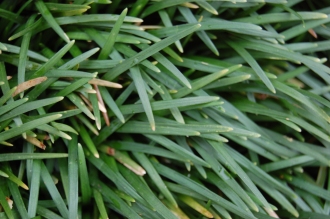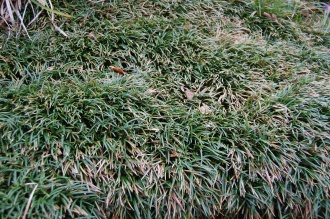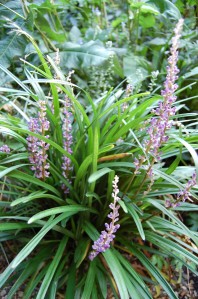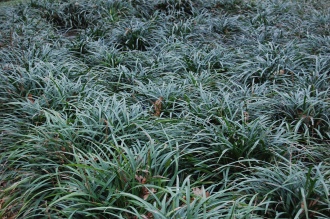Position: Full sun to partial shade
Flowering period: Summer
Soil: Moist, well drained
Eventual Height: 30cm
Eventual Spread: 80cm
Hardiness: 6a, 6b, 7a, 7b, 8a, 8b, 9a, 9b, 10a, 10b, 11
Family: Asparagaceae
Ophiopogon japonicus is an evergreen clump forming herbaceous perennial. Its dark green leaves are linear with entire margins, are up to 40cm long and 1cm broad. Its white/ pale lilac flowers are small and tubular and appear on short spikes. Its fruit is a blue berry and is up to 5mm across. Its roots are large stolons with tuberous roots, these enable its spread.
Ophiopogon japonicus, commonly known as Fountain Plant, Lilly Turf, Mondo Grass and Monkey Grass, is native to Japan and Korea. In its native habitat it grow in shady woodlands. This plant may spread readily given the right conditions.
The etymological root of the binomial name Ophiopogon is derived from the Greek name ‘Ophis’ meaning ‘serpent’ and ‘Pogon’ meaning ‘beard’, in reference to its foliage. Japonica is derived from the Latin meaning ‘of Japan’.
The landscape architect may find Ophiopogon japonicus useful as a low growing carpet forming ground cover. Once established this plant is drought tolerant for short periods of time.
Ecologically, Ophiopogon japonicus is attractive to pollinating and nectar loving insects.
Ophiopogon japonicus prefers moist, fertile, well-drained soils. It tolerates most pH of soil. It will tolerate wet and waterlogged soils.
Ophiopogon japonicus requires little maintenance. Large clumps may be divided in spring.
